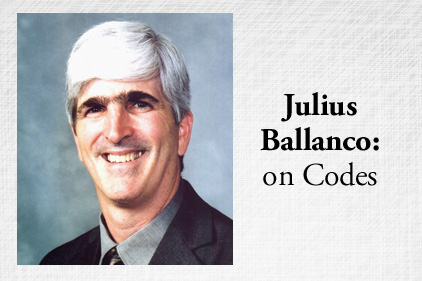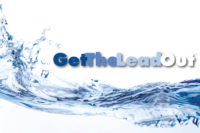
|
| Photo credit: ©istockphoto.com/thebroker |
One of the questions I have been fielding for the last few months is: How will the new federal no-lead law impact me as the engineer?
Technically, it won’t impact you. But practically, you need to change the way you specify.
Let me explain. As of Jan. 4, the law prohibits any product introduced into commerce for potable water to contain more than 0.25% lead. This is what has been identified as no-lead, lead-free or low-lead.
As an engineer, you do not introduce anything into commerce. Those are the key words. Let’s assume you specify a lead product for drinking water. Now, let’s further assume the manufacturer supplies the product, the distributor stocks and sells it to the plumbing contractor, and the contractor installs it.
Who is in violation of the law? The manufacturer, the distributor and the plumbing contractor.
Who has not violated the law? The engineer that specified the product. A specification is not an introduction of a product into commerce.
So, it can be said that engineers can ignore the law since it doesn’t impact them. But that is a purist’s point of view and not a practical point of view. Our job as engineers is to specify products that comply with all laws and not just the code. So, while not violating law, we are violating the requirements that regulate us as the engineer of record.
The plumbing codes are making it easier to enforce the no-lead law by adding the no-lead requirements to the code. That will result in making the plumbing inspector responsible for enforcing the no-lead requirements. The feds actually expected this to happen since it is nearly impossible for the Environmental Protection Agency to enforce the requirements on every new construction project.
http://www.iapmo.org/ IAPMO recently issued a Tentative Interim Amendment for previous editions of the code, making the no-lead law a requirement. Jurisdictions can now add the TIA to their adopting ordinances. ICC added the requirement to the 2015 edition of the IPC and IRC.
Now, back to us engineers. How do we know if a product complies? The standards profession has provided us with a helping hand in determining compliance. NSF 61 was modified to require products to comply with the no-lead law. Hence, all future products having an NSF 61 listing must comply with the no-lead law.
The other standard that will help the engineer is NSF 372. This is the standard used to determine if a product complies with the no-lead requirements. Laboratories are now issuing listings for conformance to NSF 372. You can add NSF 372 to your specifications to assure that a product meets the no-lead requirements.
Make a check list
When specifying products, you need to understand that not every product must meet the no-lead requirements. There are certain exempt products that are specifically listed, including flushometer valves, shower valves, bathtub fillers, ballcocks, bidet faucets and 2-in. and larger main-gate valves. Don’t ask about the last one — trying to figure that out is like trying to figure out any political decision made in Washington.
There are other products that do not have to comply that are not included on this list. That leaves it to the engineer to determine if or when a product must be no-lead. The feds use the phrase “water used for human consumption.” The http://www.epa.gov/ EPA further defined that in their FAQ as water used for “drinking, teeth brushing, food preparation, dishwashing and maintaining oral hygiene.” While this text is not in the federal law, it is how EPA is interpreting the law. I would suggest that you download the FAQ here.
Let me provide you some recent examples. For a kidney dialysis center, the water supply to the hemodialysis equipment does not have to be no-lead. The water is not used for human consumption. The backflow preventer on the water supply to the equipment also does not have to be no-lead. Furthermore, any backflow preventer to a system not used for human consumption does not have to be no-lead. As a result, there are many backflow preventers that still use leaded copper alloy.
Two bizarre products that have been identified as being required to be no-lead are fire hydrants and sillcocks. In the EPA FAQ, fire hydrants are listed as a possible source for emergency drinking water. This interpretation was issued about two months before the law became effective.
The fire-hydrant industry immediately went to Congress to have this interpretation reversed. Congress voted unanimously to exempt fire hydrants. As I write this column, the EPA has backed away from its initial interpretation, saying it will not apply the no-lead requirements to fire hydrants. By now, the Senate may have voted with the House to exempt fire hydrants.
The listing of sillcocks also shocked many manufacturers. The plumbing industry has never considered sillcocks to be a source of drinking water. As one colleague said, “The contaminants in the vinyl hose will get you way before any lead bothers you.” (The exception would be campgrounds and fairgrounds.)
The EPA refined its interpretation saying that the sillcock should be labeled, “do not drink the water,” if it contains lead in excess of 0.25%. Again, there is nothing in the federal law requiring such labeling. However, if you are concerned about EPA’s interpretation, you should require all sillcocks to have a label stating they are not for drinking water.
While considering sillcocks, a question came up about a sillcock in a fish-processing facility. When the fish come off the boats, workers spray the fish down, as well as the unloading area. You may initially think, “Who cares?” However, by definition, the fish-processing facility is considered food preparation. The fish are meant to be eaten, that is, unless the plant is for cat and dog food.
I encourage you to use your engineering judgment when it comes to whether a product needs to be no-lead or not. It is always better to err on the side of no-lead.
HELPFUL LINKS:
www.pmengineer.com/linkedinJoin pme on LinkedIn!




